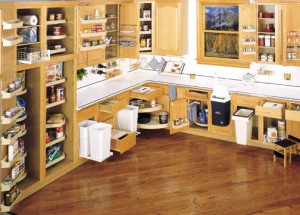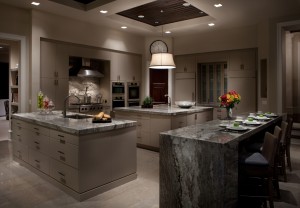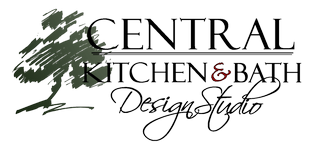What do I look for when choosing a cabinet, be it for myself or a client?
1. I want a cabinet that is KCMA certified. This means that the cabinet (box and door) have gone through testing to make sure it meets a certain standard. That it can hold up to changes in temperature and normal use without damage.
2. What level of cabinet do I want? Stock, Custom, Semi Custom, or???This one can get tricky and if you don’t know cabinets you can over pay. In most cases I use Semi Custom. Often it does not cost much more than Stock and the options are much better.  Our industry over uses the word CUSTOM, make sure you ask a lot of questions on how the cabinet is made and how it can be altered to make sure this is the right choice for you. I prefer cabinets that are made in a factory, the controlled environment and KCMA certification puts my mind at ease.
Our industry over uses the word CUSTOM, make sure you ask a lot of questions on how the cabinet is made and how it can be altered to make sure this is the right choice for you. I prefer cabinets that are made in a factory, the controlled environment and KCMA certification puts my mind at ease.
3.  Options- There could be (and there are) entire books on the options that are available for your kitchen cabinets. My advice, work with a professional that can help you determine what options will fit your needs and wants- as well as fit in your budget. Popular items are Roll-out trays and Pullout trash containers, but there are so many (many) more.
Options- There could be (and there are) entire books on the options that are available for your kitchen cabinets. My advice, work with a professional that can help you determine what options will fit your needs and wants- as well as fit in your budget. Popular items are Roll-out trays and Pullout trash containers, but there are so many (many) more.
4. The cabinet box. A box is not just a box, there are many factors that go into making a good cabinet box. To me, the most important thing is strength and durability. Not so much what it is made of. I need to know that it will last a lifetime (or two). There are some that will tell you it needs to be made of plywood, other say real (hard) wood.  I can tell you that I have used them all and they, when made properly, all work. This includes “pressed wood”. I have used pressed wood in my own kitchen and there are benefits to using it that you can’t get with the other options. Like most things, quality counts. If you buy cheap, you tend to get what you pay for. Do a little research and make sure the box can handle the weight of what you are putting inside.
I can tell you that I have used them all and they, when made properly, all work. This includes “pressed wood”. I have used pressed wood in my own kitchen and there are benefits to using it that you can’t get with the other options. Like most things, quality counts. If you buy cheap, you tend to get what you pay for. Do a little research and make sure the box can handle the weight of what you are putting inside.
5. Always order a repair kit. Things happen. It is much easier to take care of them right away when you have a repair kit handy. Store it on the top shelf of the cabinet you use least. This way you will be ready for that scratch whenever it comes…
6. Installation. Here again, ask questions, do some research and please, please, do NOT use drywall screw to install you cabinets. They will break and cause you many headaches. When screwing frames of cabinets together, best to pre-drill do you don’t crack the wood.  When screwing cabinets to the wall (with the right screw!), make sure that you hit the stud so that your cabinets are properly supported. I would hate to hear about them falling off the wall because they were only screwed into the drywall.
When screwing cabinets to the wall (with the right screw!), make sure that you hit the stud so that your cabinets are properly supported. I would hate to hear about them falling off the wall because they were only screwed into the drywall.
7. Recycle. Carefully remove your old cabinets so that they can be donated. In many cases you can call a resell facility that handles cabinets and they might even take them down for you, and haul them away as well. You save time, money AND the environment!

Paul Greenspan is a 30 year Veteran of the Kitchen and Bath industry and has been published in a number of local and national magazines. He has taken leadership roles with the National Kitchen & Bath Association, Bath & Kitchen Buying Group, and others. He is currently the General Manager for Central Kitchen and Bath in Winter Park Florida. If you would like more information on Kitchen or Bath remodeling check out his website: centralkitchen.dev or call 407-629-9366.

